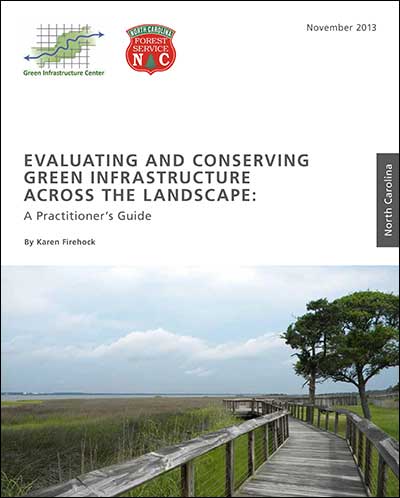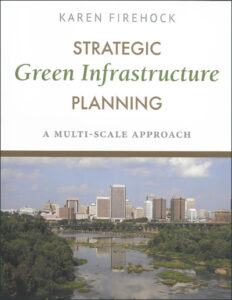Green Infrastructure Center, Inc.
GIC maps natural assets to create green infrastructure plans and green prints.

North Carolina Planning Guide
Evaluating And Conserving Green Infrastructure Across The Landscape: A Practitioner’s Guide
This guide is based upon seven years of research and field tests by the Green Infrastructure Center Inc. (GIC) that sought to evaluate, prioritize and map natural and cultural assets in North Carolina.
This guide is intended to help people make land management decisions which recognize the interdependence of healthy people, strong economies and a vibrant, intact and biologically diverse landscape. Green infrastructure consists of our environmental assets — which GIC also calls ‘natural assets’ – and they should be included in planning processes. Planning to conserve or restore green infrastructure ensures that communities can be vibrant, healthful and resilient. Having clean air and water, as well as nature-based recreation, attractive views and abundant local food, depends upon considering our environmental assets as part of everyday planning.
While there are other books and guides about the benefits of green infrastructure planning, this guide provides practical steps for creating green infrastructure maps and plans for a community. It draws from twelve field tests GIC conducted over six years to learn how to evaluate and conserve natural resources. These field tests were conducted in a diversity of ecological and political conditions, at multiple scales, and in varied development patterns – from wildlands and rural areas to suburbs, cities and towns.
The GIC determined three things:
• How to create green infrastructure maps that highlight the most significant resources for conservation.
• Steps to integrate those maps into local and regional plans.
• How to communicate the importance of this work to local officials, planners, developers and others.
Chapter Seven by Charles Kline
 National Guide to Strategic Green Infrastructure Planning
National Guide to Strategic Green Infrastructure Planning
You might also be interested in our National Guide, which has more information on green infrastructure planning in urban environments. It includes the planning steps found in the state guides, with updated statistics.
$49 available in paperback and e-book.
Back to Resources